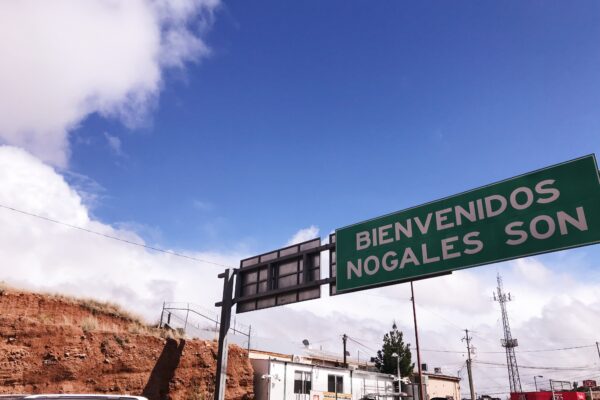I didn’t drive 22 hours from St. Louis, Mo. to Nogales, Ariz. just to prove President Trump wrong when he declared a national emergency on the U.S.-Mexico border. I did it in an effort to learn about immigration issues firsthand, because I know his belief that funding a border is not the solution to all of America’s problems.
I learned that there is a real crisis where thousands of people are dying and thousands more risk their lives traversing dangerous conditions. Unlike President Trump, I learned firsthand that the solution isn’t a wall. The solution is empathy. The solution is compassion.
What we need is less walls, less division and less separation. We must pay attention to the stories of people who cross the border and listen to their experiences.
The solution is offering refuge, reforming immigration policy and simply upholding human dignity.
When I first saw the 14-foot iron wall that designates who deserves freedom and who doesn’t, however, I didn’t have that hope.
I met parents travelling with their young children, fleeing violence in their home country, already having traveled for months before arriving in Mexico. I was heartbroken for the mother I met, who lost her two older sons to gang violence in Honduras, and only had her young son, daughter and the clothes on their back, waiting in Nogales to seek asylum.
I was angry and frustrated after I met with a Customs and Border Patrol agent, unable to fathom how a human being could be so apathetic to inhumane conditions and practices.
I was heartbroken while I sat at the back of an Operation Streamline proceeding, an initiative by the Department of Homeland Security that prosecutes people—75 people at the same time—who have crossed the border at unauthorized areas as criminals.
I was brought to tears when I spoke with a man named Wilmer Stanle Sierra Duran, a detainee in the Florence Detention Facility who has been awaiting his asylum status for almost two years, so close to giving up but is still able to find joy in the midst of injustice.
My heart was heavy as I walked along a desert path lined with forgotten backpacks, dropped water bottles and torn clothes in Arivaca, Ariz., that showed the journeys of migrants past and present. I was haunted by the privilege I had to be able to imagine walking the hot, dusty terrain on a perilous journey to places unknown while I was able to ride in a car, eat three meals a day, have a bed to sleep in at night, and come back home to my life as a college student at the end of the trip.
The numbers and reports in the news didn’t really make sense until I saw them in real life. I never fully comprehended the hundreds of miles that migrants walked on foot until I drove along the Arizona desert for several hours straight. I never felt the drastic and extreme outdoor temperatures of the desert borderlands, until I camped overnight in Patagonia. I was never able to picture the dehumanization and violation of human rights and dangerous living conditions, until we drove past Eloy Detention Center, a private prison operated by CoreCivic that holds about 1,500 ICE detainees and has the highest rate for inmate deaths. Until I saw hundreds of people line up at the Comedor at the Kino Border Initiative in Nogales, or wrapped in foil blankets under the Puente Internacional Paso del Norte in El Paso, I never visualized the thousands of people seeking asylum and a better life.
It’s not just people crossing the border undocumented, or fleeing danger from their home countries. It’s U.S. policy that makes it almost impossible for them to be granted asylum status. People are coming to ports of entry, doing it the “legal way,” and agents are turning them away.
People cannot just “get in line,” because there is no line.
Immigration issues include a broken justice system that prosecutes migrants as criminals for a completely non-violent crime. It’s not just thousands of people being detained by ICE or Border Patrol. It’s families being separated, children left afraid and parents losing hope, in dangerous and unlivable detention facilities—with no end in sight.
The solution isn’t a wall. A wall will not address the deaths and dangers that exist beyond our country’s boundaries. A wall will not humanize the hundreds of people sitting in shackles, forced to plead guilty in courtrooms. A wall will not reunite families. A wall will not bring back those who have died in detention centers. A wall will not help the 11 million undocumented people who only know America as their home, who pay taxes but don’t benefit from them, who work for the economy that doesn’t support them, who love a country that doesn’t protect them.
The solution is showing love and care for our neighbors. It’s offering protection and safety to those who need it. It’s learning about what is actually happening at the border, instead of believing whatever is in the news. It’s asking yourself, “what would you do?” It’s having compassion for parents who do anything to keep their children safe and healthy. It’s reforming U.S. immigration policy.


